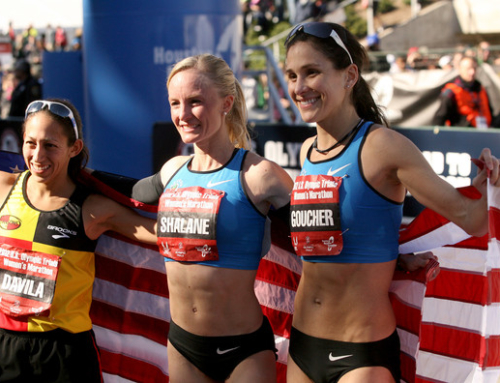January 30, 2015
By Phil Maynard
Part 1 — Building a Team — (an 8-part blog series)
The classic view (perhaps romantic, somehow spiritually heroic) is of a lone pastor, tucked away in a study by candlelight, weighty bound commentaries stacked around him as he toils late at night awaiting inspiration by the Holy Spirit, who swoops in dramatically to deliver a message to be delivered from on high to an expectant congregation. This is the stuff of oil paintings.
A slightly more updated image would be of a pastor reviewing the lectionary, selecting some hymns and a Call to Worship and Prayer of Confession and a Benediction, jotting down notes on a yellow legal pad and dropping them off to the church secretary, so she can send them on to the Director of Music and print them out on the church bulletin.
Then there’s a hipper update, the preacher in jeans, selecting the service elements from her smartphone, complete with links to applicable web sites, but still the single operator, sending the worship details down from the summit, maybe by text rather than sticky note, but still a one-way process.
The old-school model identifies worship leadership as a priestly function, oracular in nature, the product of seminary training and special knowledge. The new perspective is worship as collaborative, creative process, a product of a community of artists, working together to form a seamless experience of God.
The second approach is perhaps most recognizable as the mega-church worship model, driven by a team of salaried professionals, including musicians, visual artists, actors, and media specialists. But the heart of relevant, relatable worship is not a mega-budget. Authentic, fresh, relatable worship can happen in any size congregation: what it takes is a team approach.
The key premise is that a collaborative worship planning process is always stronger than lone wolf leadership.
Sometimes the team is composed primarily of staff members, sometimes it’s almost exclusively volunteers (that depends largely on the size of the church and the financial resources available), but it’s the gathering together of talent and passion that produces a worship experience deeper and more in tune with a congregation’s needs than that possible from one individual, however gifted.
Even Jesus had a team.
The Worship Team strategy offers numerous advantages, some obvious, some more subtle.
* A variety of perspectives and experiences: Different ages, different ethnic, gender, cultural, and theological backgrounds mean that worship is relevant to a broader range of people. And here’s one thing you might not automatically think about. As noted in my Shift leadership materials and drawing on the work of Len Wilson and Jason Moore in Taking Flight with Creativity: Worship Design Teams That Work, it is important to include a new believer in this process, a voice that can filter out churchy language and confusing concepts that may be familiar to longtime church goes but completely turn off seekers and new believers.
* Energy for all seasons: With a broad team, even when some members of the team are in a creative slump (as is natural and inevitable for anyone in ministry), there is a still a deep well of ideas from which to draw.
* Accountability: The members of a team constantly drive one another to stronger work and can more honestly and forthrightly evaluate the effectiveness of worship design decisions.
Once the commitment has been made to the team approach, it’s important to understand what makes an effective team process. A strong team will be creative, collaborative, complementary, curious, capable, coherent, and constructive.
- Creative: Select team members who are recognized for their creativity, who value new ideas and are curious by nature, a little restless, and interested in listening and learning.
- Collaborative: The team process should solicit and value all ideas and perspectives. A worship team should embrace trying out the ideas of team members (even being willing to let them be ‘less than successful’ on occasion). Ideas should produce ideas, with each team member working to build off the ideas of the others for a whole that is greater than the sum of the parts.
- Complementary: The members of the team should balance one another in skill sets, interests, experience, perspectives, and passions. A team will produce moribund results if all the team members come to the table with the same attributes (a great shortstop is critical if you’re going to win the World Series, but a whole team of shortstops would be a disaster).
- Curious: The team should keep up-to-date on emerging practices (as well as knowledgeable about ancient practices), regularly exchanging books and web sites and dedicated to continuing education and new worship experiences.
- Capable: Pick people who are good at their respective crafts. Find writers, musicians, visual artists, set decorators, thespians, and technically gifted individuals, and find people in these categories who are excellent at what they do.
- Coherent: Strong communication is a must, with team members staying engaged by multiple methods and working from a unified vision – it’s critical to share goals and a clearly articulated vision for worship.
- Constructive: A strong team will support one another in their individual pursuits. Team members won’t only be concerned about their own passions, but will be interested in the interests of their teammates. They will encourage one another and promote opportunities for growth as well as celebrate successes.
It’s arguable more work for a pastor to recruit and regularly engage such a team, but the payoff can be dramatic, producing worship that is passionate and relevant, engaging the congregation in new ways and leading to a thirst for discipleship.
One other word of advice. Every team does need a leader – be sure you’ve defined who’s team it is. The Creative Team (like any effective team) must have someone who takes responsibility for organization and communication. This is not always the pastor. The pastor always has the final say on what happens in worship, but is not always the best candidate to run the creative group. That person can be someone who functions as a Chief of Staff, with the group presenting a menu of options to the pastor from which to choose.
What have your experiences been with a Creative Worship Team? What fears would you have in building such a team? How does your situation pose unique challenges? Comment and share so that we can all learn together.







Leave A Comment